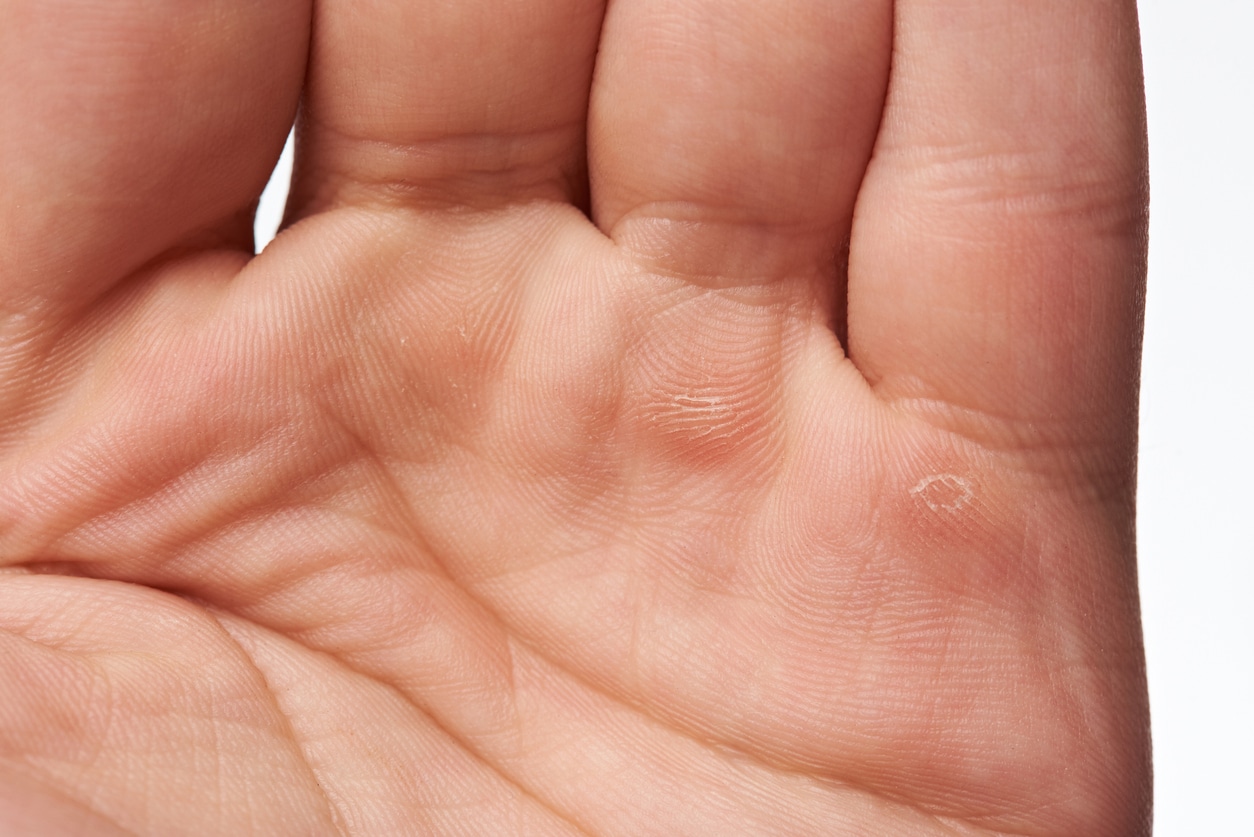How to Deal With Calluses
September 12, 2023 by VitalSkin Dermatology

Calluses, those tough, thickened patches of skin that often develop as a result of repeated friction and pressure, can be a common skincare concern. While they serve as a natural defense mechanism, they can become unsightly and uncomfortable if left untreated. In this guide, we will explore effective ways to deal with callouses, ensuring your skin remains healthy and smooth. Just as you would consult a dermatologist for a skin issue, understanding how to care for calluses is crucial for your overall skin health.
Identify the Cause
The first step in addressing callouses is identifying their underlying cause. Calluses can form due to various factors, including:
- Repetitive Actions: Activities such as playing musical instruments, weightlifting, or even manual labor can subject your skin to repeated friction and pressure. Identifying the specific activities that contribute to callouses can help you take preventive measures.
- Footwear: Ill-fitting shoes can create constant friction on your feet, leading to the development of calluses. Ensuring you have properly fitting shoes with adequate cushioning and support is crucial in preventing and managing foot calluses.
- Improper Technique: Using tools or equipment without the proper technique can lead to calluses. Whether it’s using gardening tools or sports equipment, ensure you’re using them correctly to reduce friction on your skin.
Preventive Measures
Once you’ve identified the cause of your calluses, it’s time to take preventive measures:
- Proper Footwear: Invest in well-fitting shoes with cushioning to reduce friction on your feet. If your activities involve repetitive hand movements, consider using gloves with adequate padding.
- Moisturize Regularly: Dry, dehydrated skin is more prone to calluses. Apply a quality moisturizer daily, paying special attention to calloused areas. For extra hydration, use a thick cream or ointment at bedtime.
- Exfoliate Gently: Regular exfoliation helps manage calluses. Use a pumice stone or foot file to remove dead skin cells and gradually reduce callous thickness. Be gentle to avoid damaging surrounding healthy skin.
Home Remedies and Care
Here are some additional home remedies and care tips for dealing with callouses:
Soaking: Soak your hands or feet in warm, soapy water for 10-15 minutes to soften calluses. You can enhance the effect by adding Epsom salts or essential oils.
Salicylic Acid: Over-the-counter products containing salicylic acid can help soften and reduce the thickness of calluses. Follow the product instructions carefully.
Protective Measures: When engaging in activities that contribute to callouses, use protective measures like gloves or padding to minimize friction.
Natural Remedies: Some natural remedies like applying aloe vera gel or coconut oil to calloused areas can provide relief and hydration.
Medical Intervention
In some cases, calluses may become more than just a minor annoyance and require professional medical attention. Here are some situations in which seeking medical intervention is essential:
Pain and Discomfort
If your calluses have grown to a size where they cause constant pain, and discomfort, or even interfere with your daily activities, it’s time to consult a healthcare professional. They can assess the severity of the callous and recommend appropriate treatment.
Bleeding and Infection
Any signs of bleeding or infection around a callous should be taken seriously. This can happen if a callous cracks or if bacteria enter the skin through small openings. If you notice redness, swelling, pus or an unpleasant odor, seek medical attention promptly. Infections need to be treated with antibiotics or other appropriate measures.
Diabetes and Other Medical Conditions
Individuals with diabetes or other underlying health conditions, such as poor circulation, need to be especially cautious when dealing with callouses. Diabetes, for instance, can lead to decreased sensation in the feet, making it easier for calluses to develop and go unnoticed. Regular foot examinations by a healthcare professional are essential for those with diabetes to prevent complications.
Professional Callus Removal
A healthcare provider or podiatrist can safely remove large or stubborn calluses using medical-grade instruments. This procedure is typically painless and reduces the risk of complications that may arise from attempting to remove calluses at home.
Remember that early intervention is key to preventing calluses from progressing into more serious problems. If you’re unsure whether your calluses require medical attention, it’s always better to consult a healthcare provider to ensure your skin health and overall well-being are properly addressed.
Unlocking Smooth and Healthy Skin: The VitalSkin Dermatology Guide to Callous Care
Dealing with callouses involves both prevention and care. Identifying the cause, wearing proper footwear, regular moisturizing, gentle exfoliation, and using home remedies can effectively manage calluses and keep your skin healthy. By following these guidelines, you can enjoy smoother, callous-free skin and ensure your overall skin health. Just as you would consult a dermatologist for any skin issue, taking the right steps to deal with callouses is essential for maintaining your skin’s well-being. With these expanded tips and insights, you’ll be well-equipped to handle callouses effectively and enjoy the benefits of healthy, comfortable skin.
Ready for healthier, callous-free skin? Connect with VitalSkin Dermatology experts today to elevate your skincare journey.

